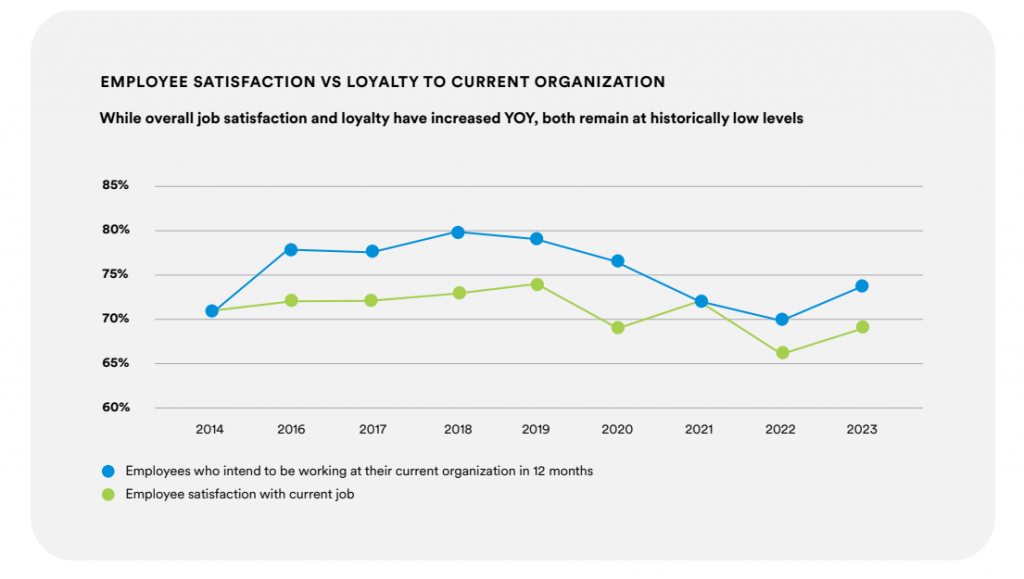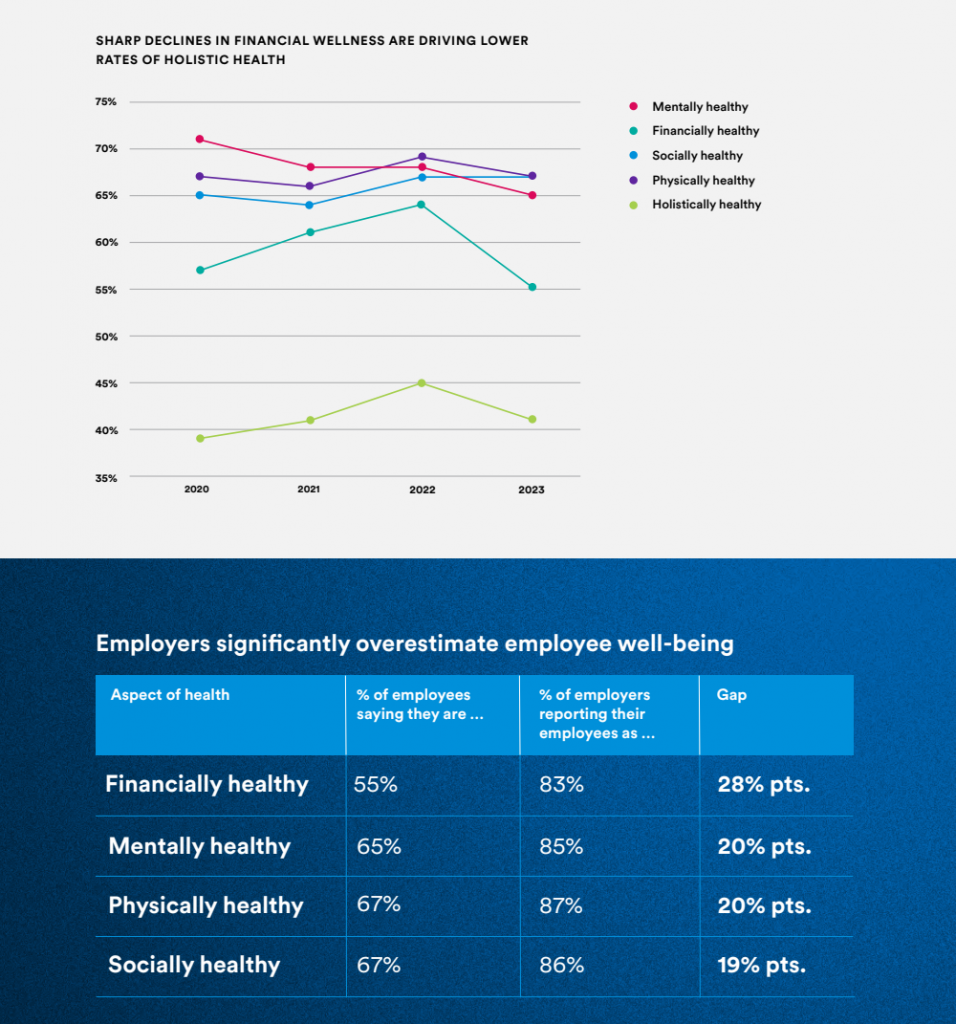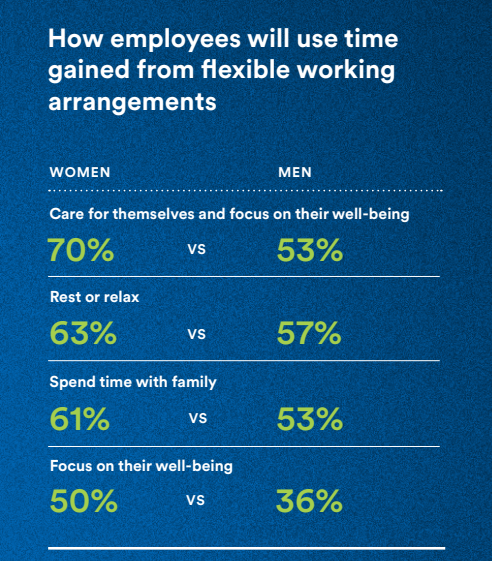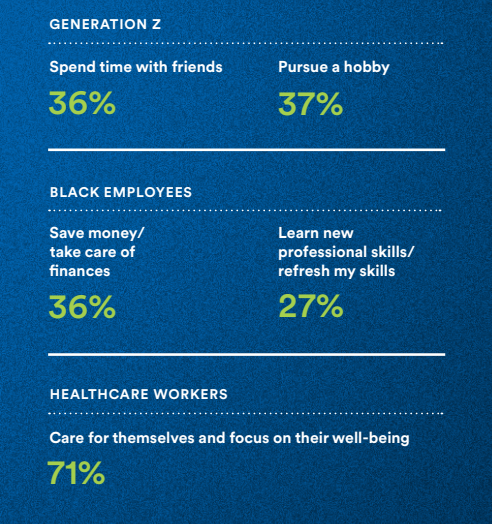In the high-stakes game of attracting and retaining top talent, a revolutionary truth is taking businesses by storm: prioritizing employee well-being isn’t just a nice-to-have, it’s the cornerstone for sustained success. This shift is orchestrating a complete overhaul of modern business strategies, catapulting employee care from a mere afterthought to center stage.

Nevertheless, a recent MetLife study presents a stark contrast: while 88% of employers acknowledge the importance of demonstrating care for their employees, just over half of the workforce feels cared for. This discrepancy between perception and reality calls for an in-depth exploration into the influences affecting employee well-being and smart strategies to bridge this growing divide.
This article covers key findings from MetLife’s study, revealing the direct advantages of fostering employee health, and presents strategic steps to develop comprehensive benefits packages that resonate with the nuanced needs of a modern workforce.
Pressed for time? Here’s a quick summary…
- Cultivating a safe and comfortable work environment, a supportive management team, and effective recognition programs reinforces a culture of care.
- Offering mental health support, financial wellness programs, and flexible work arrangements can help reverse the declining rates of benefits satisfaction.
- Establishing two-way communication improves benefits utilization and ensures offerings align with employees’ needs.
- Investing in employee health reduces absenteeism, decreases direct medical costs, and boosts overall productivity.
Action Item: Using insights from this article, employers should assess their current approach to employee well-being and align it with modern trends and needs.
Key Stats From MetLife Study
The study reveals compelling statistics that encompass the employer-employee perception gap and spotlight the essential benefits valued by today’s workforce.
- 88% of employers believe it’s important to demonstrate care for employees, but only 58% of employees feel cared for.
- 2x the proportion of employees consider health and wellness programs “must-haves” for a new role compared to 2020.
- 78% of Gen X employees and 79% of Boomers consider benefits and wellness programs “must-haves”.
- Essential benefits for employees include medical/health insurance (79%), dental insurance (73%), and vision care insurance or discount program (70%).
- 60% of employees seek more non-medical benefits, the highest level since 2013.
- 70% of employees express interest in customizable benefits.
- Only 58% of employees are satisfied with the affordability of benefits provided by their current employer.
What Employees Say:
“I appreciate they have an employee gym – that’s a cool benefit. They’ve made improvements in the breakrooms. They’ve made something called Zen Rooms, where you can go and relax and meditate a little bit.”
“I think if some of these benefits were free, that the company paid for it, that would show that you’re cared for.”
The Direct Impact Of Employee Care
Championing employee health isn’t just compassionate; it’s strategic. Employees who feel cared for are:
- 92% more likely to be engaged
- 65% more likely to be loyal to their employer
- 56% more likely to be productive
The research highlights that a supportive and inclusive work culture is at the core of demonstrating proper employee care. Elements of a caring organization include:
- Safe & Comfortable Work Environments: A safe and comfortable workplace is essential for 75% of on-site employees and 68% of remote or hybrid workers to feel cared for by their employer.
- Supportive Managers: Supportive managers are valued by 70% of employees as instrumental in a caring organizational culture.
- Recognition Programs: Effective recognition programs for outstanding performance, both formal and informal, reinforce a culture of care and appreciation among employees.
What Employees Say:
“The culture has to be there or else it’s just not going to work. If the culture is negative, it’s going to permeate through all of the employees.”
“You want the whole culture, the organizational culture to be one that’s supportive and understands that people have very different dynamics at their homes and need to be supported.”
“They need to do a better job at giving managers tools to show that they care and value them.”
Action Item: Cultivate a caring work culture by prioritizing a safe and comfortable environment, supportive managers, and effective recognition programs for outstanding performance.
Beyond Basic Benefits: The Broader Picture Of Employee Care
Despite a slight increase from last year, job satisfaction (69%) and employee retention (74%) have been on downward trend over the past several years. Looking ahead, employee satisfaction and perceptions of employers’ care may be impacted by:
- Further layoffs
- Lower compensation
- Return-to-work mandates
Despite employers’ belief that their employees are satisfied with benefits (83%), benefits satisfaction has hit its lowest point in the last decade (61%). This disparity indicates that employee needs for benefits have not been adequately met.

Nurturing Holistic Health: Addressing Financial & Mental Well-Being
Employees’ holistic health has dramatically declined, with financial well-being playing a pivotal role. Nearly half (48%) of employees attribute their worsening mental health to financial stress.

This situation presents an opportunity for employers to enhance their benefits packages, expanding beyond basic needs and embodying genuine care for employees’ holistic well-being. Financial wellness programs and mental health support are impactful offerings to address the current challenges being faced by workers.
What Employees Say:
“They’re giving us a pay raise, but it doesn’t really balance out with the cost of living because it’s only so little. With the cost of everything going up, it’s like we’re right back in the same spot.”
“I’m not saving a lot of money right now. So, yes that’s a stressor.”
“Do I need a purposeful job? No. Work has always been, ‘I have to pay rent.’”
Promoting Work-Life Balance: Embracing Flexible Work Arrangements
Free time remains a highly desired employee wellness benefit and offering flexible work arrangements can fulfill this demand. Such arrangements include:
- Hybrid or remote work
- Four-day work week
- Flextime
Work flexibility enables employees to devote more time toward personal responsibilities and interests, promoting work-life balance and overall job satisfaction.


What Employees Say:
“If we’ve been really, really busy they’ll say, ‘hey, just work a half-day’ or ‘just take the rest of the day off.’ Things like that matter a great deal.”
“I couldn’t imagine working full-time and working in an actual work setting. This whole being able to work from home, and that flexibility, has been great.”
Action Item: Expand benefits packages to include mental health support, financial wellness programs, and flexible work arrangements to help restore employee well-being and satisfaction.
Creating A Holistic Approach To Employee Well-Being
A holistic approach to employee well-being recognizes that health and happiness are influenced by various dimensions, including:
- Physical well-being
- Mental/emotional well-being
- Financial well-being
- Social well-being
- Occupational well-being
- Spiritual well-being
- Intellectual well-being
- Environmental well-being
A holistic wellness program addresses diverse facets of well-being, creating a comprehensive support system that nurtures employee health and quality of life. This, in turn, increases motivation and productivity in the workplace.
What Employees Say:
“Once I start seeing a change in how well looked after I am, it would probably change my motivation to go to work.”
“They’re obviously going above and beyond for me and showing me just the appreciation by providing the extra care, the benefits.”
“The benefits make me think they care.”
Action Item: Embrace a holistic approach to employee well-being, ensuring a well-rounded well-rounded support system that nurtures employees’ health, happiness, and success.
Employee Experience & Benefits Communication: Key To Success
In a bid to refine employee experience, establishing two-way communication ensures that benefit offerings align with employee needs. Organizations can leverage tools such as quizzes surveys and campaigns to gain real-time insights into employee preferences.
By seeking and acting on this feedback, benefits can be tailored to the areas of well-being that require the most support. As a result, employees feel heard, valued, and cared for, leading to increased engagement and greater utilization of benefits.
Three out of four employees don’t fully understand their benefits package, highlighting the need for a well-communicated benefits package. Clear and continuous communication about available benefits ensures employees are knowledgeable about their options and can make informed decisions that align with their health goals.
In essence, a well-articulated benefits package not only enhances the employee experience by improving understanding and uptake, but also underlines the organization’s commitment to their overall well-being.
What Employees Say:
“They welcome our thoughts, our opinions, our knowledge. They really see us as a resource versus as a tool.”
Action Item: Incorporate regular feedback sessions to align benefits offerings with employee preferences, increasing engagement and making workers feel valued. Ensure clear, effective, and consistent communication about benefits and wellness programs.
The ROI Of Investing In Employee Health

Investing in employee health yields significant returns, with employer-sponsored health plans estimated to generate a 52% return on investment (ROI) by 2026. The key drivers of this ROI are:
- Reduced direct medical costs
- Heightened productivity
- Tax benefits
Reduced absenteeism is one of the tangible benefits of a healthy and engaged workforce. When employees prioritize their well-being, they are less likely to miss work due to health-related issues. This is because prioritizing personal wellness often leads to better physical and mental health, strengthening employees’ resilience to illness and stress. Consequentially, this boosts overall workplace productivity, creating a win-win situation for employees and employers.
Action Item: Monitor and analyze the ROI of employee wellness programs and adjust strategies accordingly to maximize benefits.












